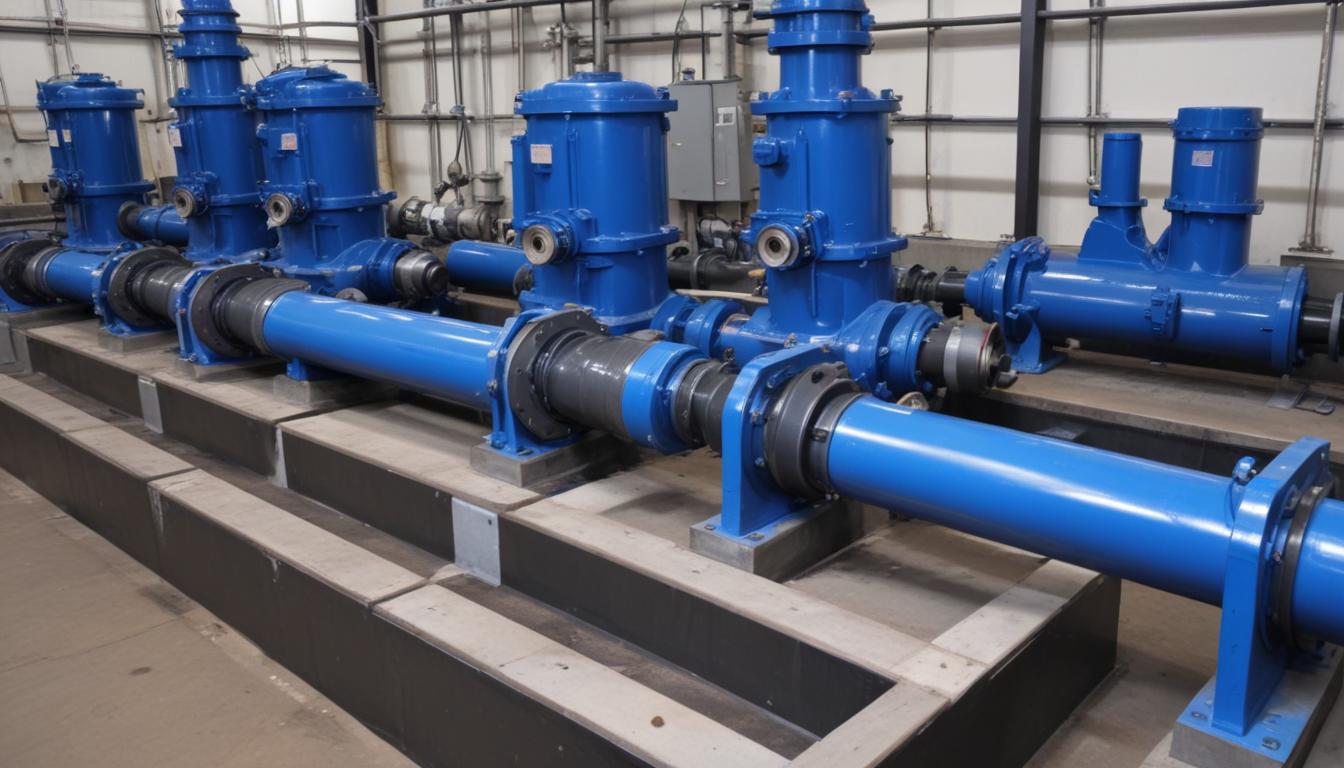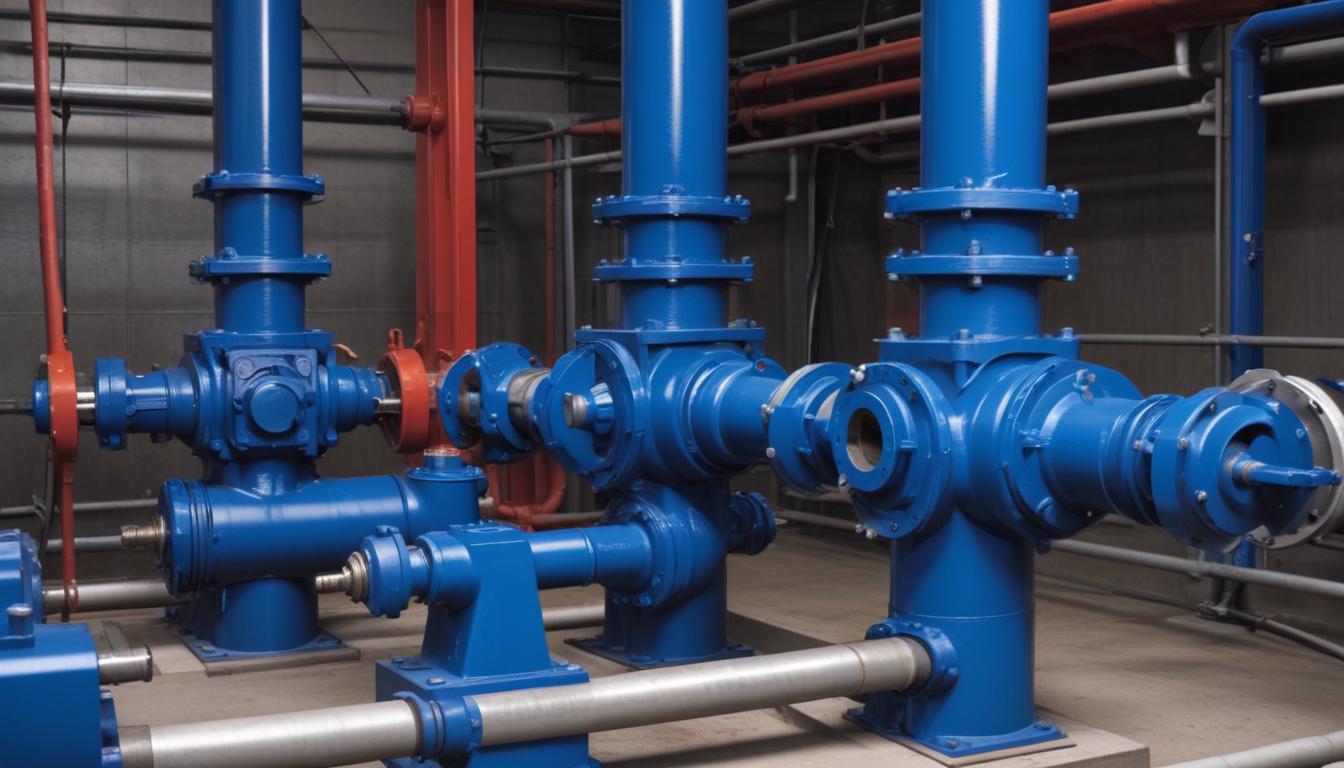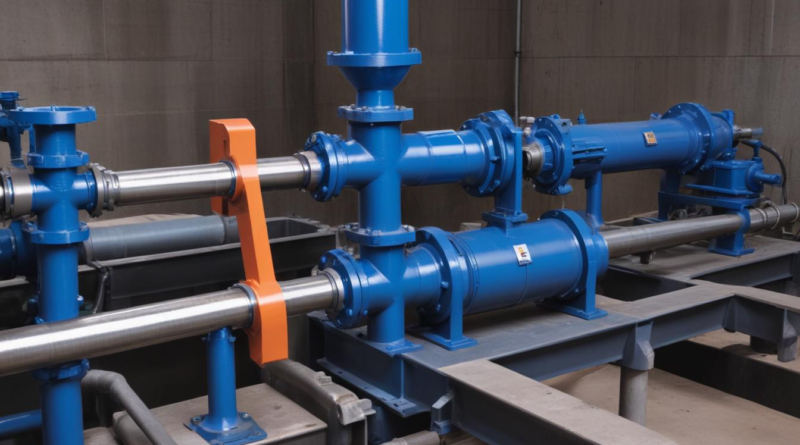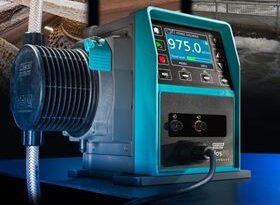Predictive maintenance strategies for progressive cavity pumps
Predictive maintenance is an advanced strategy aimed at optimizing the operational efficiency of progressive cavity pumps by anticipating potential failures before they occur. This proactive approach relies on the continuous monitoring of pump performance data, facilitating timely interventions that mitigate downtime and repair costs. By utilizing various techniques, such as vibration analysis, thermal imaging, and acoustic monitoring, engineers can effectively assess a pump’s condition and predict its maintenance needs. The main objective is to maximize the pump’s operational lifespan while minimizing disruptions and maintenance expenses.
At the core of predictive maintenance is the collection and analysis of data, which can be structured using key performance indicators (KPIs). These KPIs typically include:
- Operating hours
- Flow rate consistency
- Pressure fluctuations
- Temperature readings
- Vibration patterns
Integrating this data into a predictive maintenance framework allows for sophisticated algorithms to detect any anomalies that may signify impending issues. For instance, variations in flow rate can indicate blockage or wear within the pump’s rotor, while unusual vibration levels might suggest misalignment or bearing failure.
Furthermore, using internet-connected sensors enables real-time data acquisition, facilitating immediate responses to detected issues. Employing predictive maintenance strategies not only enhances the reliability of progressive cavity pumps but also contributes to improved energy efficiency, reducing operating costs significantly over time.
Incorporating these strategies into maintenance protocols requires a cultural shift among engineering teams, focusing on data-driven decision-making and collaborative problem-solving to ensure smooth implementation and maximized results.
Key factors influencing pump performance
Several key factors significantly influence the performance of progressive cavity pumps, ultimately impacting their efficiency, reliability, and lifespan. Understanding these factors is crucial for the effective implementation of predictive maintenance strategies that can help mitigate failures and enhance pump operation.
Among these critical factors are:
- Fluid Characteristics: The nature of the fluid being pumped, including its viscosity, temperature, and chemical composition, can greatly affect the pump’s performance. For instance, highly viscous fluids may require more torque, leading to increased wear on components.
- Pump Design: The specific design and configuration of the pump, such as rotor-stator geometry and material selection, determine how well the pump can handle different operating conditions. Adequately spec’d pumps for the application can reduce stress and extend service life.
- Installation Practices: Proper installation is critical to pump performance. Misalignment, incorrect mounting, and insufficient inlet conditions can lead to inefficiencies and early failures.
- Operational Conditions: Factors such as flow rate, pressure, and temperature directly impact pump efficiency. Maintaining optimal operational ranges is essential, as deviations can lead to increased wear and hydraulic losses.
- Maintenance Regularity: The frequency and quality of maintenance activities play a vital role in ensuring pump reliability. Routine checks and timely interventions based on predictive analytics can prevent catastrophic failures.
By closely monitoring these factors, engineers can gather valuable data that inform predictive maintenance initiatives. For example, by analyzing operating parameters such as flow rate and pressure fluctuations, teams can identify trends and predict machine behavior, creating a proactive environment rather than a reactive one.
Additionally, evaluating historical performance data can reveal patterns that offer insights into the wear rates of various components, ultimately guiding maintenance schedules and replacement timelines. This empirical approach not only optimizes pump performance but also significantly reduces downtime and operating costs.
Incorporating sensors and advanced diagnostics into the pump system allows for continuous data collection, ensuring that any deviations from optimal performance are detected early. This integration of real-time monitoring with comprehensive performance evaluation forms the backbone of effective predictive maintenance strategies for progressive cavity pumps, leading to enhanced operational reliability and cost savings.
Common failure modes in progressive cavity pumps

Understanding the common failure modes in progressive cavity pumps is essential for the successful implementation of predictive maintenance strategies. These pumps, while robust and efficient, are not immune to operational challenges and failures that can significantly disrupt production processes. By identifying and analyzing these failure modes, engineers can develop proactive measures to minimize downtimes and extend the operational lifespan of the equipment.
Common failure modes in progressive cavity pumps include:
- Mechanical Seal Failures: The mechanical seals in progressive cavity pumps can degrade over time due to wear, improper installation, or exposure to abrasive particles in the fluid. This may lead to leaks, which can compromise operational efficiency and fluid integrity.
- Rotor and Stator Wear: The rotor and stator pair is critical for the pump’s functionality. Continuous operation can lead to wear on these components, particularly if the pumped fluid is abrasive or if it contains solid particles. Monitoring wear patterns through predictive maintenance can indicate when these components may need replacement.
- Blockages: Clogging due to heavy viscosity or particulate matter can hinder flow rates and increase pressure, potentially damaging the pump over time. Regular monitoring of pressure and flow rates can help detect such conditions early.
- Motor and Drive Failures: The motor and drive mechanism, which are pivotal in creating the rotor’s movement, may fail due to overheating, electrical faults, or mechanical misalignment. Consistent monitoring of electrical input and mechanical vibrations can signal impending motor issues.
- Misalignment: Misalignment between the pump and its drive can lead to undue stress on pump components, resulting in premature failure. Utilizing alignment tools and regularly checking alignment during maintenance cycles can help prevent these issues.
- Excessive Vibration: Excessive vibrations can indicate bearing failures, misalignments, or other mechanical faults. Implementing vibration analysis as part of a predictive maintenance program can help detect these issues before catastrophic failures occur.
Implementing regular condition monitoring techniques, such as vibration analysis, temperature monitoring, and pressure testing, allows for the early detection of these failure modes. Predictive analytics can indicate trends that correlate with specific failure modes, enabling engineers to take action before a minor issue escalates into a major repair scenario.
Furthermore, establishing a thorough history of maintenance, repairs, and operational parameters enables teams to recognize patterns that might indicate the risk of failure. The combination of historical performance data with real-time monitoring creates a comprehensive understanding of each pump’s condition, ultimately enhancing the effectiveness of predictive maintenance efforts.
In essence, knowledge of the common failure modes in progressive cavity pumps, coupled with effective monitoring and analysis, forms a solid foundation for implementing successful predictive maintenance strategies. This proactive approach not only improves reliability but also supports optimized operational performance and reduced lifecycle costs.
Techniques for implementing predictive maintenance
Implementing effective predictive maintenance techniques for progressive cavity pumps requires a systematic approach that incorporates various technologies and methodologies. Advanced monitoring and diagnostic technologies are essential tools for accurately assessing the pump’s condition, allowing for timely maintenance interventions. Key techniques include:
- Vibration Analysis: This technique involves measuring the vibration signatures of pump components to identify anomalies. Regular vibration assessments can detect early signs of mechanical issues, such as misalignment or bearing failures, which can be addressed before leading to pump failure.
- Thermal Imaging: By using thermal cameras to detect temperature anomalies, engineers can monitor components for overheating, which may indicate excessive friction or electrical problems. Identifying such issues through thermal imaging enables maintenance actions to be taken promptly, thereby preventing severe damage.
- Acoustic Monitoring: This technique relies on the detection of sound waves produced by mechanical movements within the pump. Changes in the acoustic profile can signal mechanical wear, cavitation, or other operational inefficiencies. Establishing baseline sound profiles and conducting periodic assessments can help flag deteriorating conditions early.
- Data Analytics and Machine Learning: Leveraging large volumes of operational data collected from sensors, engineers can apply machine learning algorithms to predict future failures. This data-driven approach allows for creating predictive models that enhance the accuracy of maintenance forecasts based on historical performance trends.
- Fluid Analysis: Monitoring the characteristics of the fluid being pumped can reveal insights into the pump’s operational state. Regular fluid sampling and analysis can help identify chemical contamination, viscosity changes, or particulate presence that may affect pump performance and longevity.
- Condition-Based Maintenance: This maintenance strategy adapts scheduling based on real-time data rather than following a predetermined timetable. By analyzing sensor data related to wear and tear, teams can implement maintenance only when necessary, optimizing resource allocation and minimizing maintenance costs.
Integrating these techniques into a comprehensive predictive maintenance strategy can significantly reduce unscheduled downtimes. For instance, a combination of vibration analysis and thermal imaging can provide a holistic view of the pump’s health, enabling maintenance teams to prioritize critical interventions and schedule repairs during planned downtimes.
Furthermore, building a user-friendly dashboard that consolidates data from various monitoring systems can enhance visibility for engineering teams. By having real-time access to key performance metrics, teams can make informed decisions regarding maintenance actions, ensuring that all relevant factors are considered in managing pump operations.
In practice, the implementation of predictive maintenance strategies may require initial investments in sensor technology and software analytics systems. However, the long-term benefits, such as increased operational efficiency and reduced total cost of ownership, often far outweigh the upfront costs. As organizations adopt these techniques, continuous training and knowledge sharing within teams will be paramount to fully leverage the capabilities of predictive maintenance.
Ultimately, the success of these techniques depends on an organizational commitment to embracing advanced maintenance methodologies, fostering an environment that values data-driven decision-making, and promoting a culture of proactive maintenance to safeguard the reliability of progressive cavity pumps in various applications.
Case studies and success stories in predictive maintenance

Several companies have successfully implemented predictive maintenance strategies for progressive cavity pumps, showcasing the tangible benefits of this proactive approach. Case studies highlight various industries’ innovative techniques, demonstrating how organizations have minimized downtime and maximized operational efficiency.
One notable example comes from a wastewater treatment facility that faced recurring issues with pump failures due to abrasive materials in the fluid. By integrating vibration analysis and acoustic monitoring into their maintenance routine, engineers were able to detect abnormal patterns indicating wear on the rotor and stator. As a result, the facility adopted a predictive maintenance strategy that involved real-time monitoring of these critical components, leading to a 30% reduction in unplanned downtime over 12 months. By predicting failures prior to their occurrence, they successfully scheduled maintenance during planned outages, significantly improving their operational reliability.
In another case study, an oil and gas company implemented predictive maintenance for their progressive cavity pumps used in enhanced oil recovery operations. By using thermal imaging technology to monitor pump temperatures, they identified overheating issues related to insufficient lubrication. Implementing a fluid analysis regimen also revealed chemical breakdown within the lubricant, prompting timely interventions to replace and upgrade their lubricants. This proactive action led to a noticeable decrease in repair costs by approximately 25% and extended pump life by three years, demonstrating the financial value of predictive strategies in demanding environments.
Furthermore, a chemical processing plant recognized the importance of data analytics in enhancing their predictive maintenance framework. By leveraging machine learning algorithms to analyze historical performance data, the plant developed a model to forecast potential pump failures based on variable lubricating oil temperatures and pressure changes. They saw a drastic reduction in maintenance-related incidences, achieving an overall efficiency increase of 20%. The implementation of condition-based maintenance practices allowed them to focus resources effectively and schedule servicing only when necessary, optimizing their maintenance budget.
These case studies collectively highlight how adopting predictive maintenance strategies leads to improved safety, maximized uptime, and reduced operational costs in managing progressive cavity pumps. By harnessing advanced monitoring techniques and data-driven decision-making, companies across various sectors can significantly enhance their pump maintenance practices, ultimately leading to a more sustainable operational model.




